BRIAN JOHNSON makes them go even quicker!
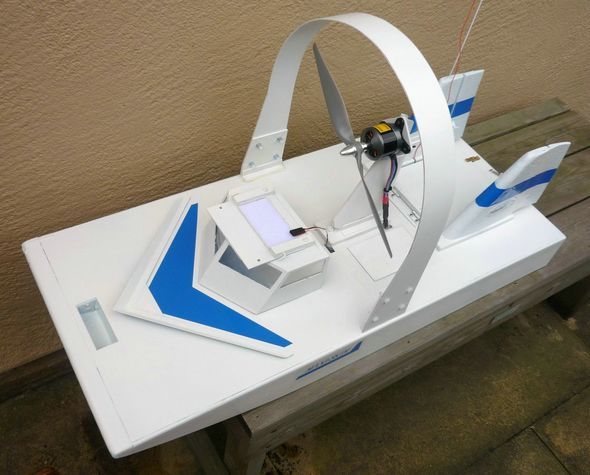
Maxi-Skim completed
The sheer variety of model boats never ceases to amaze me and a slow look through issues of this magazine or a walk around one of the model engineering exhibitions, with models from many builders, gives ample proof of modeller’s skills. From yachting enthusiasts where design, building and sailing skills can be second to none, to powered boats from small tugs to all out racing boats, examples of modeller’s skills can be seen at many exhibitions as well as true scale models of all sizes where the detail and finish including weathering can be first class. However, airboats have their own place in the overall boating scene and like many other powered boats the question often arises, can they go any faster?
Enjoy more Model Boats Magazine reading in the monthly magazine.
Click here to subscribe & save.
Modifying Big Blue
The original Big Blue was one model to answer the question. It is a sturdy and heavy boat, but being the first of the series it was under-powered with its twin 480 motors on 9.6 volts, so larger motors were needed. Twin brushless motors of around 375 Watts each, either tandem or parallel mounted were intended, but the model shop expert came up with a single motor of 800 Watts and a 330 x 203 propeller which would fit nicely within the width of the hull. To keep battery weight down, a four cell Li-Po 5300mAh battery at 14.8 volts was afforded along with a 70 Amp controller. All this was mounted on a board adjacent to the boat and its receiver for a running and operational bench test; the rotation was easily altered by swapping over any two of the three motor leads. The physical conversion was painless as the existing twin motor pod, itself taken from a Multiplex Twin Jet model aeroplane, was lifted off its two M5 stud fixings on the deck and the battery clamp etc. was removed to leave a clear hatch area. The new gear was laid along the deck to locate them for retaining the C of G at its original position and by luck the battery could be laid sideways against the stern and the motor post base could span the two existing studs. The motor post is a 15 x15mm aluminium channel ‘A’ frame clad with 1mm plywood and balsa nosing’s very similar to Sport Skim as is the 50mm wide safety arch. The finished boat was sprayed white and re-named Maxi-Skim to mark its conversion and it was then ready for the new thrust, weight and immersion readings. The thrust showed an increase of 155%, from 1000 grams to 2550 grams, and the weight increased 16%, from 3330 grams to 3860 grams. The wetted area increased by 7%, so overall the prospects looked good.
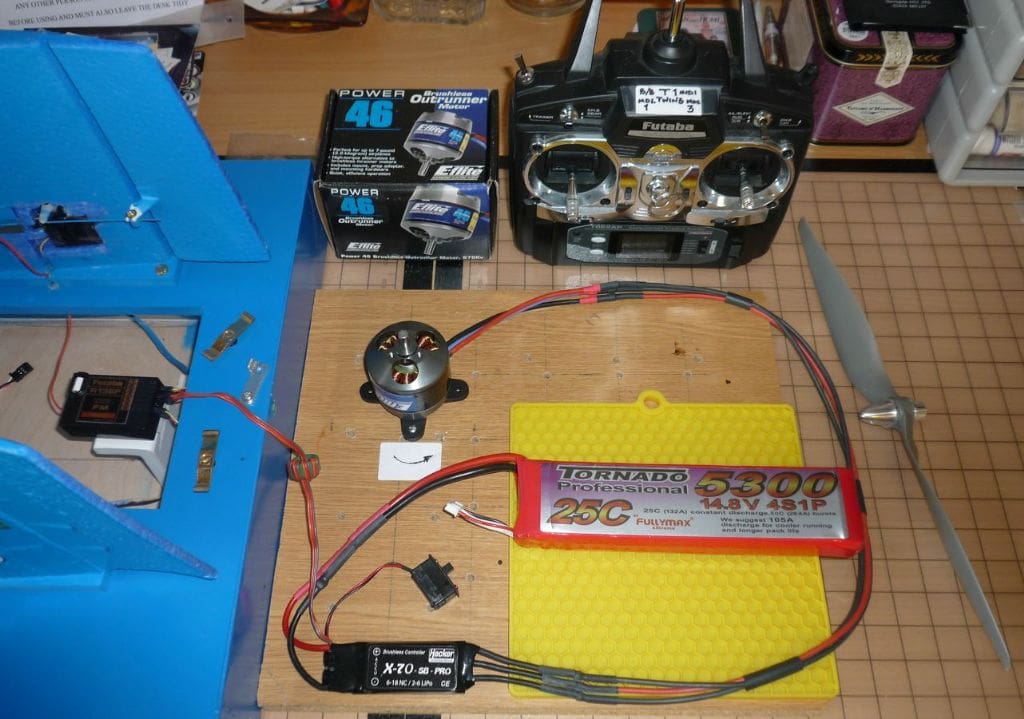
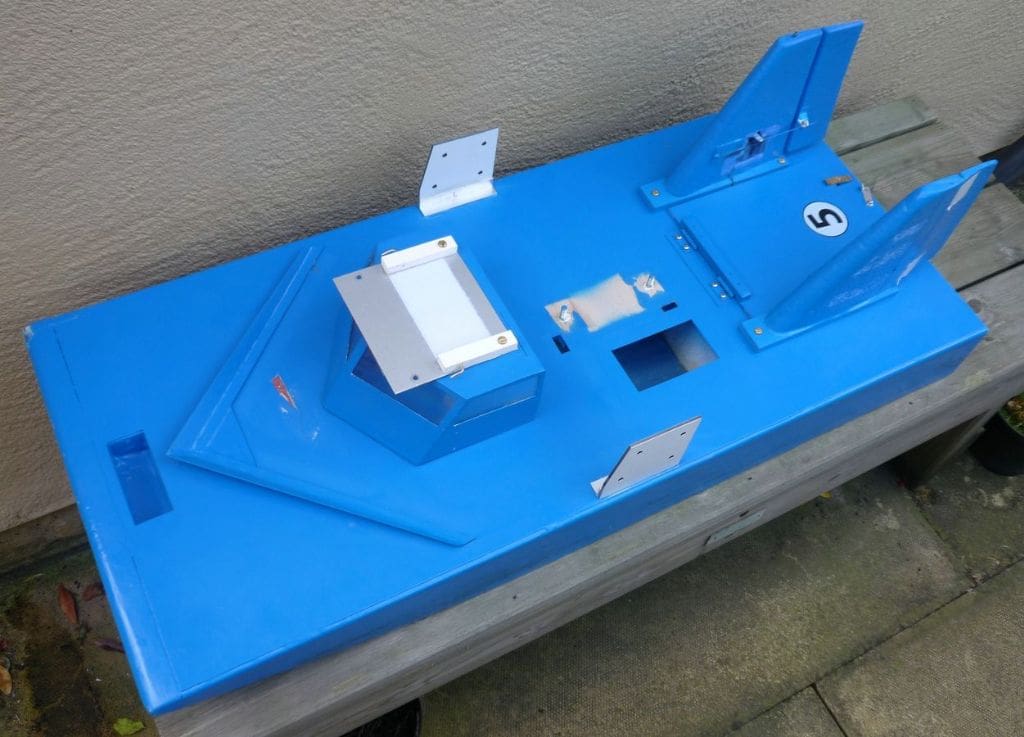
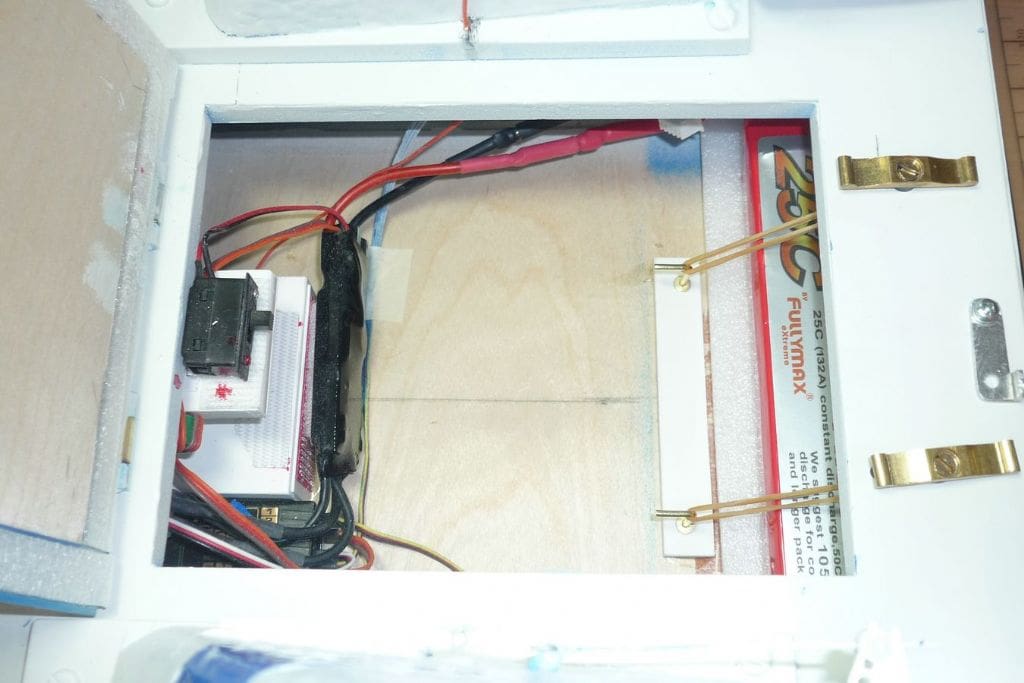
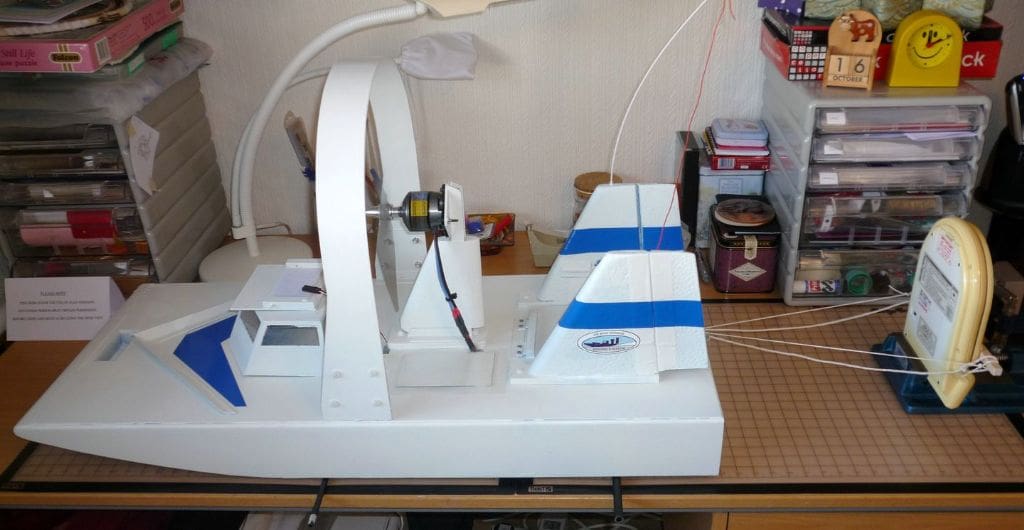
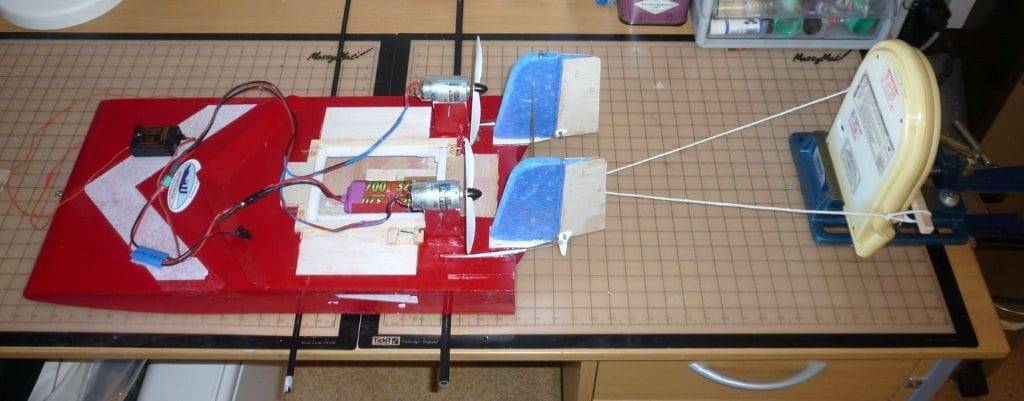
Modifying Midi-Skim
The Midi-Skim with 400 type motors on 8.4 volts is a good model in its own right, but the temptation of the now spare 480 motors on 9.6 volts and the controller etc. from Big Blue was too good to miss, so that was next in line for some work. The motors were fitted with 9mm plastic blocks to suit the posts and the full width hatches replaced by one central hatch for the longitudinal mounting of the battery which with its end against the stern achieved the original C of G. Also new rudders were fitted to allow the servo rods through the stern below deck level to be raised to above the deck level, as water flooded in through the tubes when the stern dug in during acceleration; this badly affected the performance, but was easily emptied for drying out with no ill effects on the untreated balsa. In spite of a weight increase of about 20% the immersion test surprisingly showed little change in the wetted area, but the 100% thrust increase seemed very useful. The earlier Sport-Skim supposition that any hull weight would not be much more than 50% of the hardware weight is helped by this new Midi-Skim with a hull weight of 490 grams (with two servos) and hardware of 990 grams while Maxi-Skim now defies the supposition by being amongst the best of the Thrust/Weight ratios. The availability of the 375 and 800 Watt brushless motors with thrusts of 1240 and 2550 grams prompts a common ratio of 3.25 grams per Watt, so the three basic design parameters when using brushless motors can now be stated as Motor Wattage, Total Weight and Wetted Area without recourse to thrust measuring. The Data Table (first published in MB May 2009) has now been revised to include the upgrades.
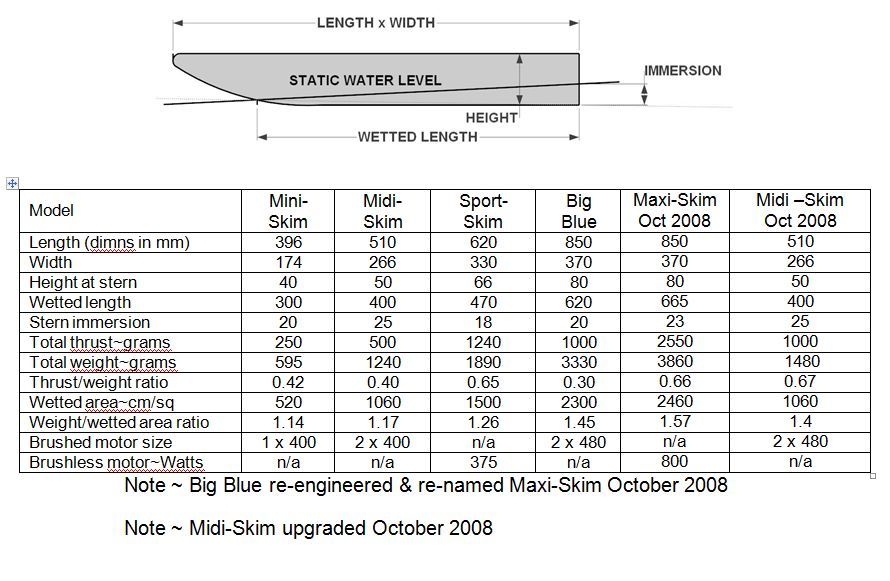
A revised data table showing the new models. The original table was published in, May 2009 MB.
Trial Runs
Maxi-Skim (ex Big Blue) has completely changed; the upside is the excellent acceleration and speed, all totally different from its original stately performance even though this looked good at the time.
The downside is the poor steering: As Big Blue, the fins and rudders were directly behind the propellers and gave good response over a fairly wide speed range. As Maxi-Skim, the rudders are well behind and to the side of the new propeller; in the lower speed ranges the rudders have virtually no effect against any water current and little effect at higher speeds such that steering was unpredictable and further trials had to be cancelled. Early photos of the conversion show a safety arch over the propeller similar to Sport-Skim but instead of inserting the arch down through the hull for strength and resilience as in Sport-Skim, it was fitted to the top of the deck only. The upshot was that due to the erratic steering, or my judgement, a decent run was spoiled by a very solid jetty and the arch just broke away and sank.
The rudder problem of size and location can be easily fixed by removing the existing fins and rudders, modifying the hatch cover and fitting a single large rudder directly behind the motor pylon. The rudder can be supported from the pylon as this is strong enough to take any brackets or fixings and the servo can be mounted to the side of the pylon.
The Midi-Skim trials were short and sweet; the speed increase could not be quantified but was self evident. Turns were very prompt and controllable, but rudder travel can be experimented with for interest only. The conversions have proved that worthwhile speed increases can be obtained with little increase in weight and a further model using the same 800 Watt drive gear as Maxi-Skim but with a balsa hull would be worth trying.
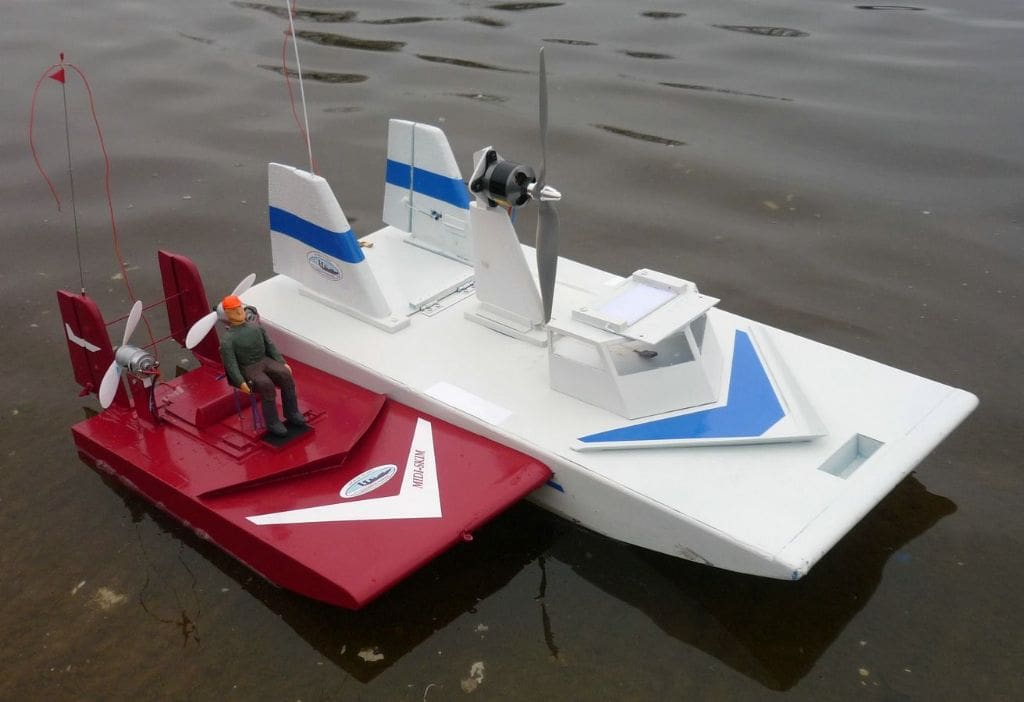
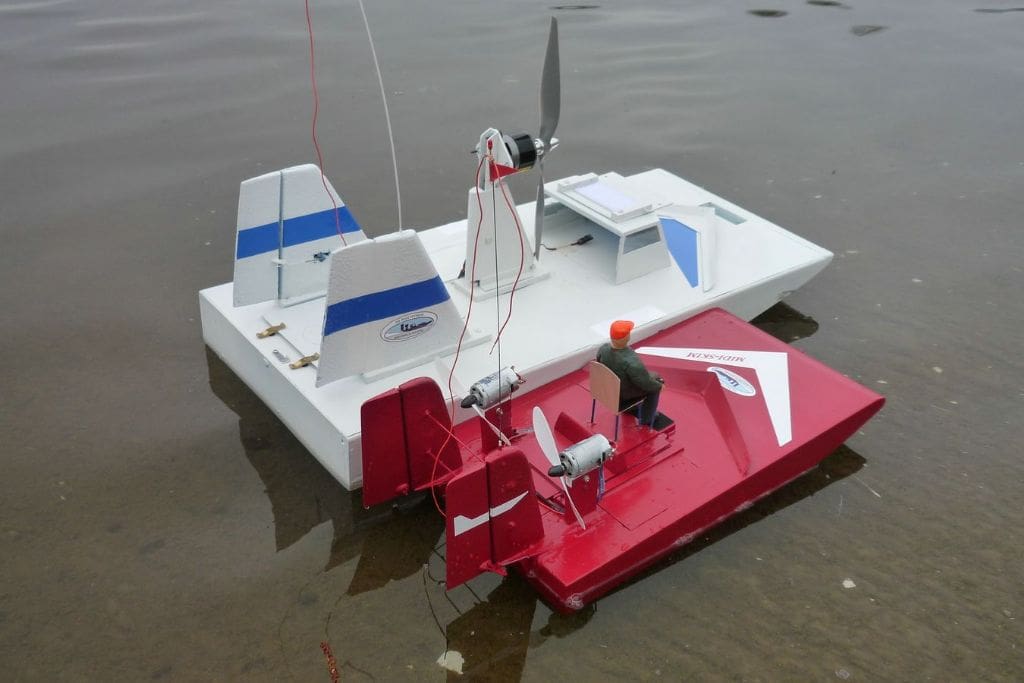
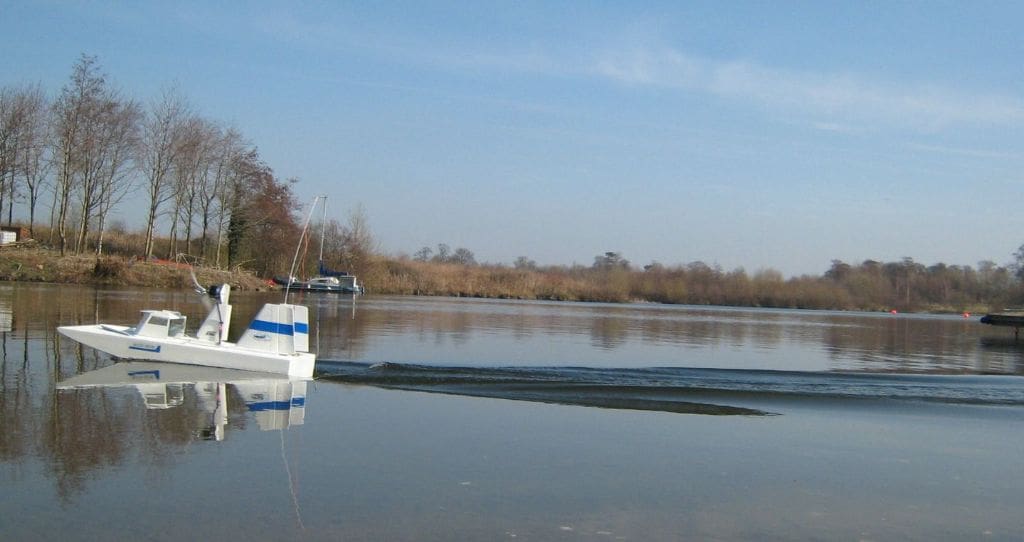
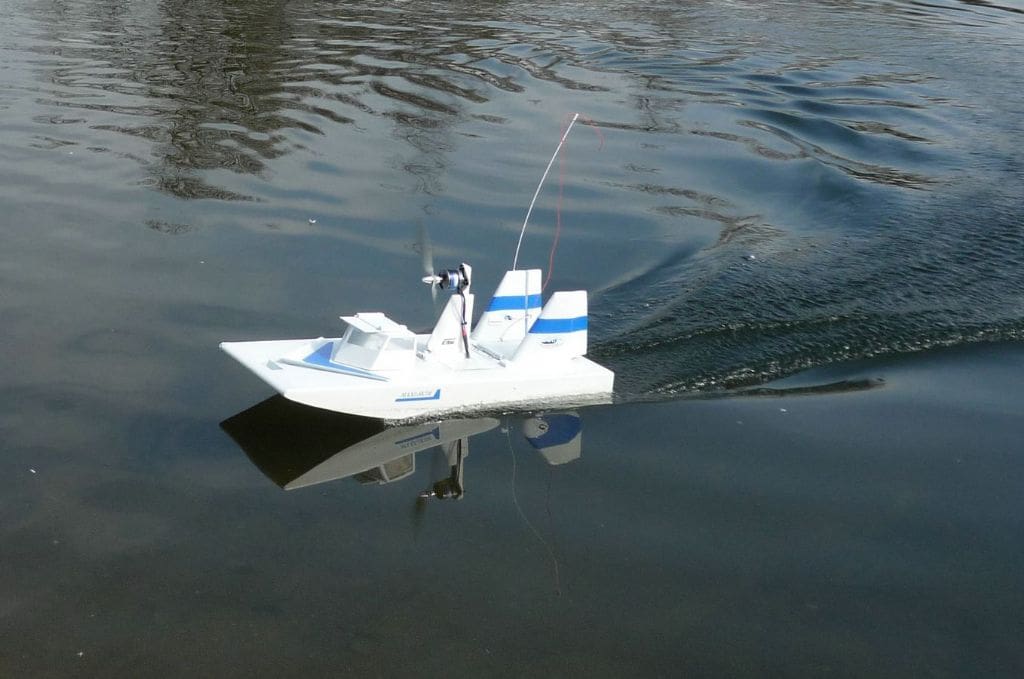
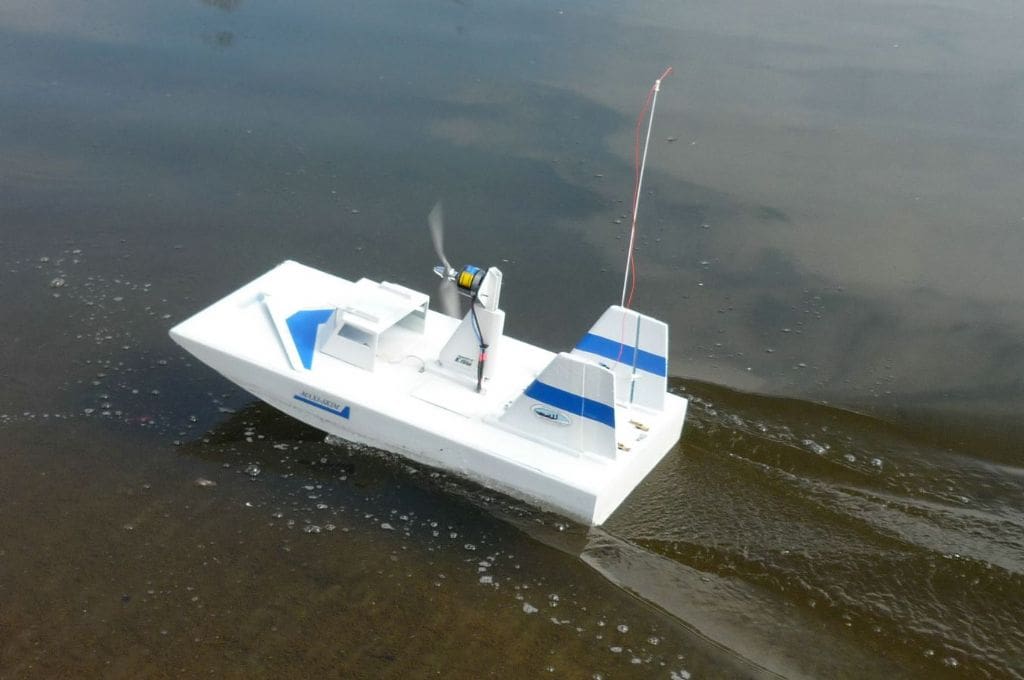
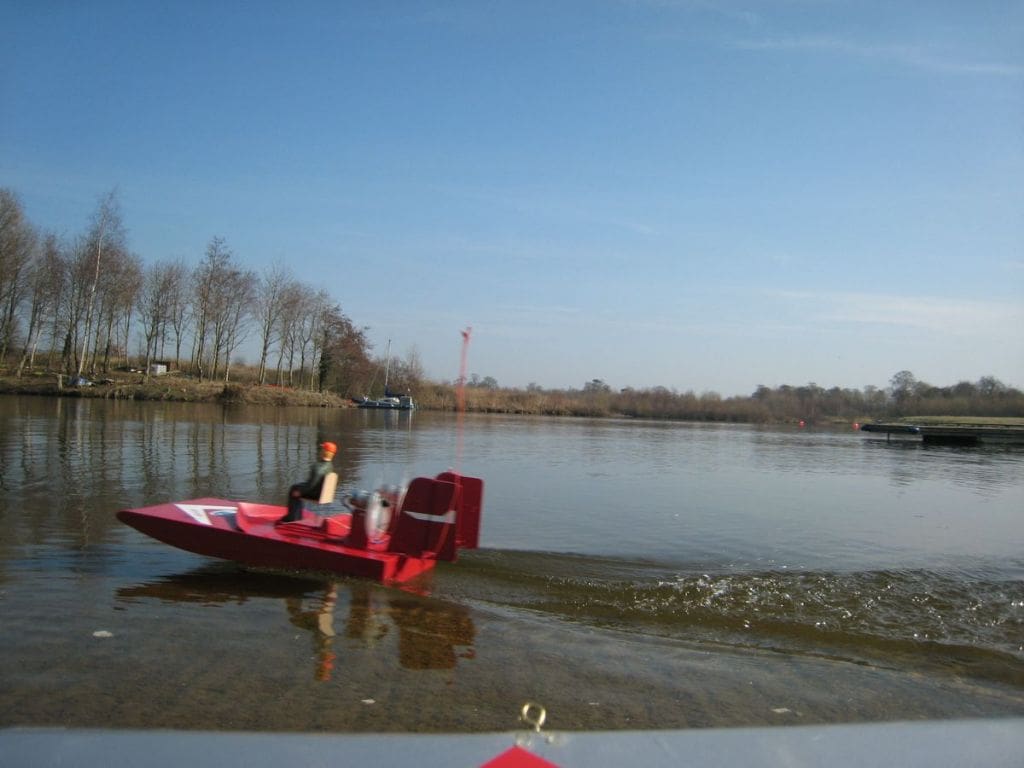
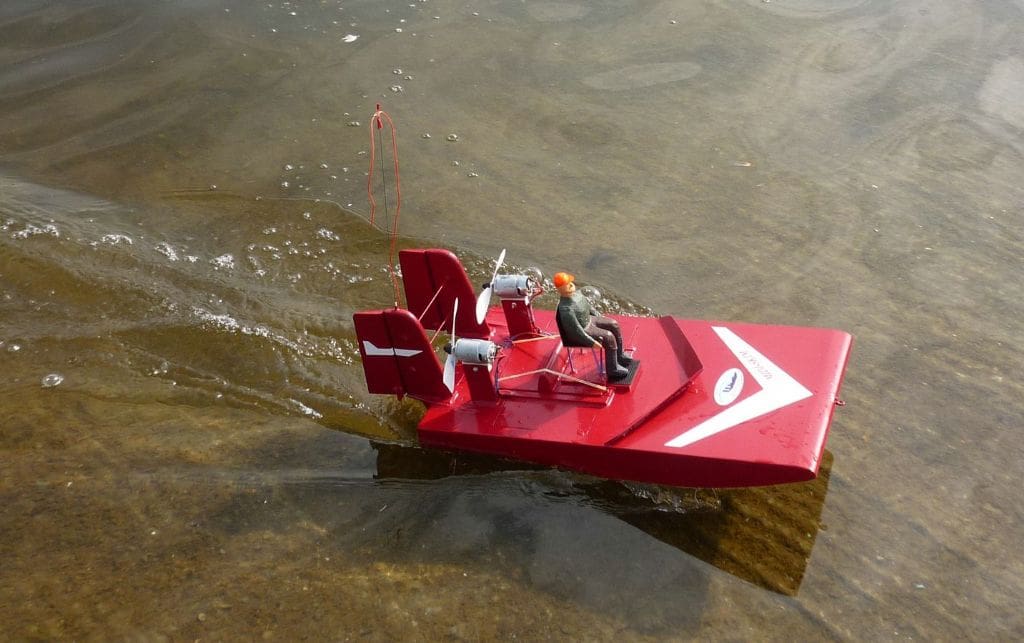
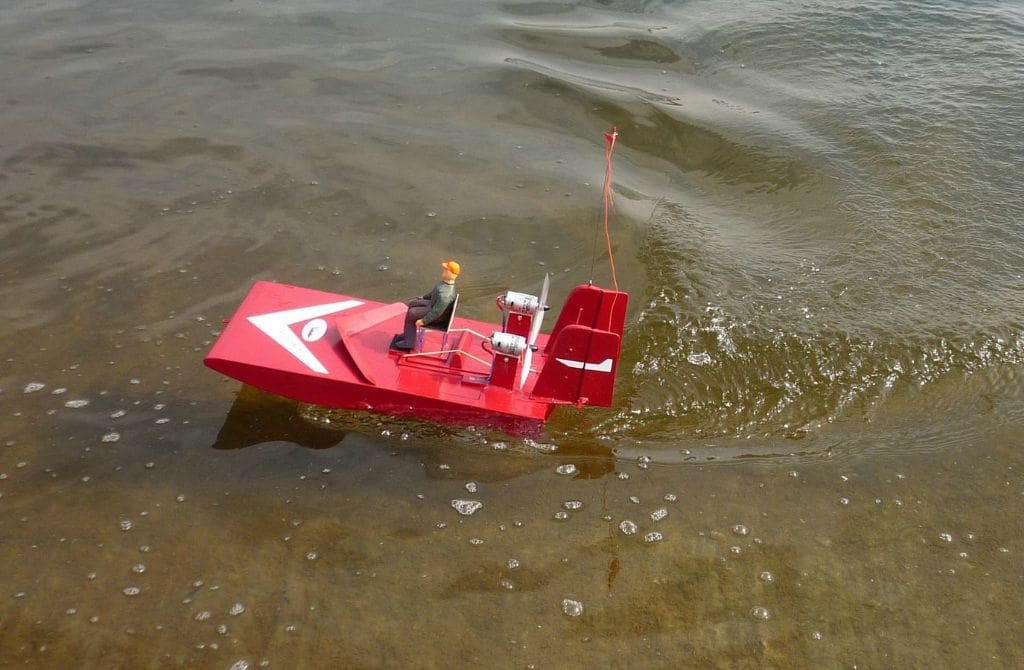
(In February 2008 MB, Brian had a letter published in Mail Boat about his airboat development of the original Glynn Guest Skimmer Free Plan first published in September 2007 MB. This was then followed by more in depth articles in the July and November 2008 issues of MB followed by a group test in the May 2009 copy. He is to be congratulated on his practical, well thought out and written development of the original Skimmer – Editor)




